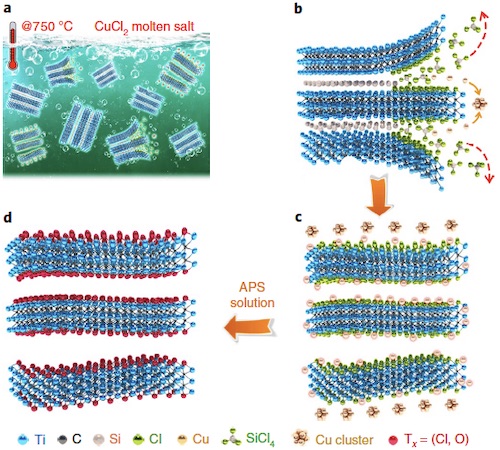Ask for a reprint
email :
* Give your email
2020
ACL
|
Youbing Li, Hui Shao, Zifeng Lin, Jun Lu, Liyuan Liu, Benjamin Duployer, Per O.Å.Persson, Per Eklund, Lars Hultman, Mian Li, Ke Chen, Xian-Hu Zha, Shiyu Du, Patrick Rozier, Zhifang Chai, Encarnacion Raymundo-Piñero, Pierre-Louis Taberna, Patrice Simon, Qing Huang, 'A general Lewis acidic etching route for preparing MXenes with enhanced electrochemical performance in non-aqueous electrolyte', Nat. Mater. (2020) doi:10.1038/s41563-020-0657-0
Two-dimensional carbides and nitrides of transition metals, known as MXenes, are a fast-growing family of materials that have attracted attention as energy storage materials. MXenes are mainly prepared from Al-containing MAX phases (where A = Al) by Al dissolution in F-containing solution; most other MAX phases have not been explored. Here a redox-controlled A-site etching of MAX phases in Lewis acidic melts is proposed and validated by the synthesis of various MXenes from unconventional MAX-phase precursors with A elements Si, Zn and Ga. A negative electrode of Ti3C2 MXene material obtained through this molten salt synthesis method delivers a Li+ storage capacity of up to 738 C g−1 (205 mAh g−1) with high charge–discharge rate and a pseudocapacitive-like electrochemical signature in 1 M LiPF6 carbonate-based electrolyte. MXenes prepared via this molten salt synthesis route may prove suitable for use as high-rate negative-electrode materials for electrochemical energy storage applications.
|

|